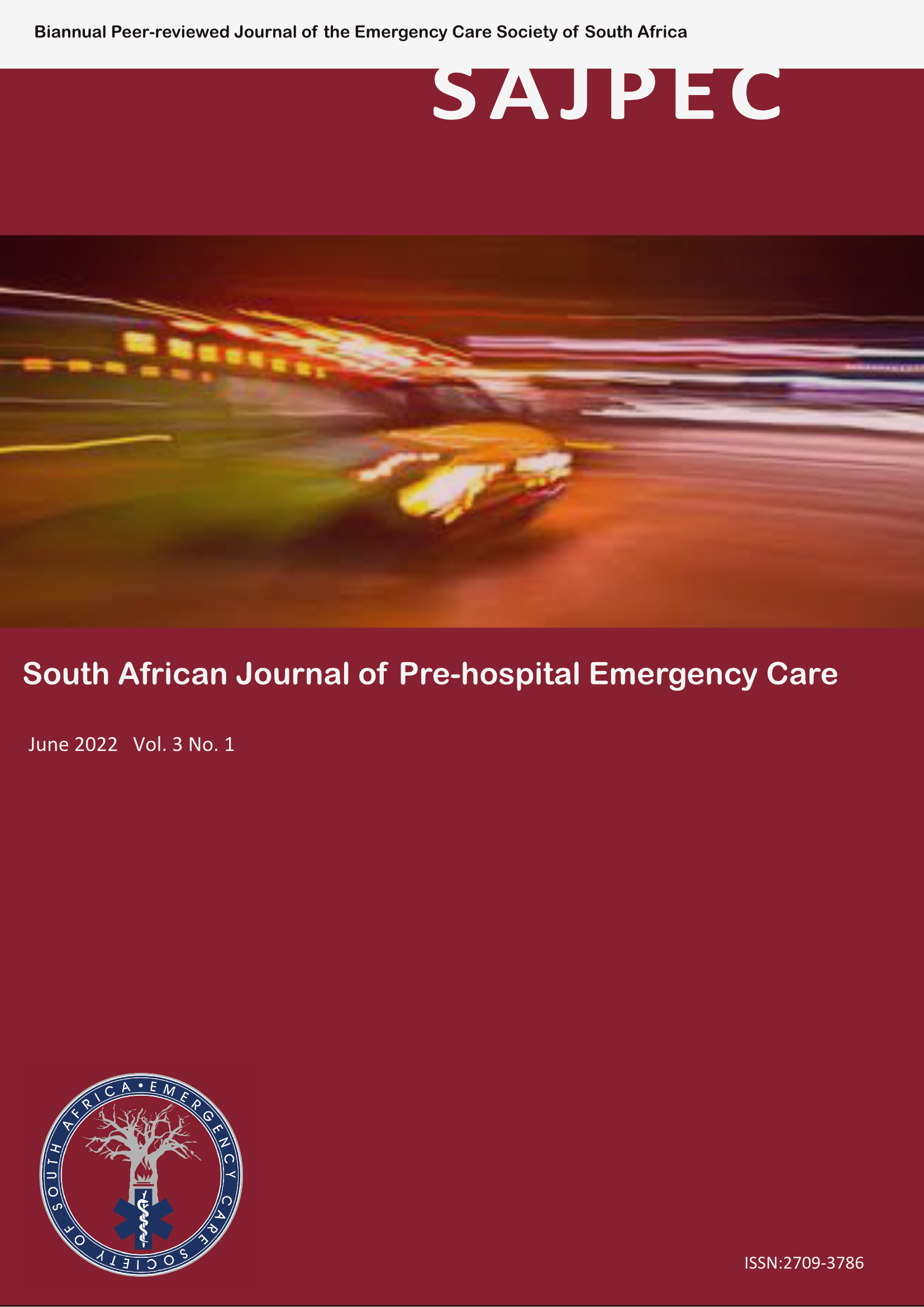Blind bougie first pass success endotracheal intubation process: An out-of-hospital case report
DOI:
https://doi.org/10.24213/3-1-4912Abstract
The blind bougie technique is performed when the epiglottis is visible to the intubator, but the vocal cords cannot be seen (Grade III Cormack-Lehane view). The blind bougie technique for endotracheal intubation is not routinely performed by Critical Care Paramedics for a failed intubation in the prehospital setting. However, at Hamad Medical Corporation Ambulance Service in the State of Qatar, the blind bougie technique is included in their failed airway clinical practice guidelines. This case report aims to describe the rapid sequence induction for intubation process and endotracheal tube placement in an adult trauma patient, presenting with a difficult airway, using the blind bougie technique in the out-of-hospital setting. A 35-year-old male patient was ejected from an all-terrain vehicle following a high-speed accident in the desert. The patient sustained an isolated head injury. Based on the patient’s clinical presentation, he required immediate endotracheal intubation for maintenance and protection of his airway prior to rapid transport to definitive care. Predictors of difficult airway were calculated. Using the blind bougie technique, endotracheal intubation was performed with first pass success. It is recommended that emergency medical services include the blind bougie technique of endotracheal intubation among their difficult airway procedures.
Downloads
Downloads
Published
Issue
Section
License
Authors grant the Emergency Care Society of South Africa the exclusive right to publish, display, reproduce and/or distribute the work in print and electronic format and in any medium known or hereafter developed, including for commercial use. Authors also agree that the Emergency Care Society of South Africa may retain in print or electronic format more than one copy of the work for the purpose of preservation, security and back-up.


